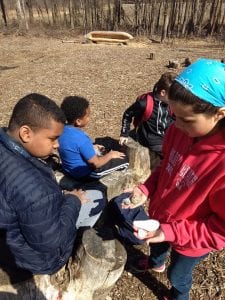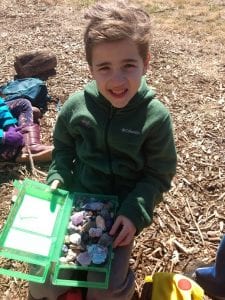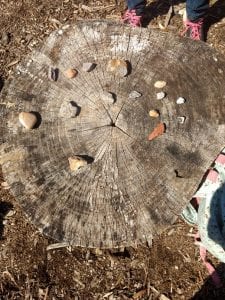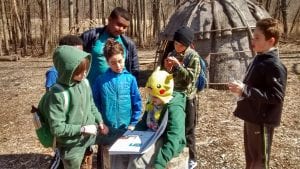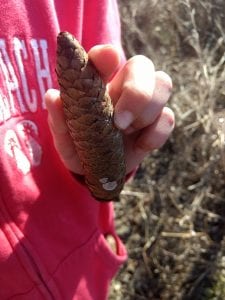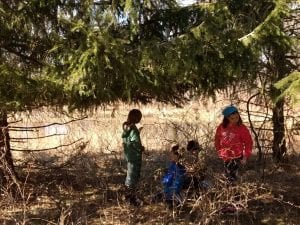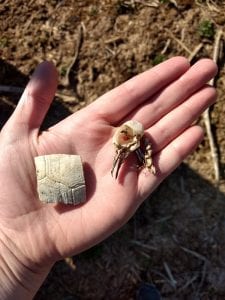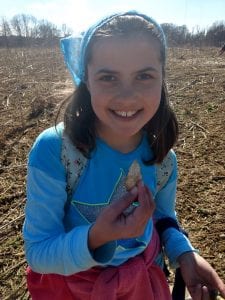3/19/2019
In anticipation of meeting our first land artist of Spring we started introducing rocks and minerals. Can you guess what natural material our land artist uses? Find out next week! Rocks are everywhere, we walk on them, drive on them, use them in landscaping, but how much do we really know about them? What’s their story? We started our day by reviewing the three difference categories of rocks, igneous, sedimentary and metamorphic. Igneous rocks are created by cooling magma, metamorphic rocks are created under extreme heat and pressure and sedimentary rocks are created in rivers and lakes after millions of years of sediment piling up. Next we got to look at examples of each type of rock. Some of the rocks we had to look at were: Obsidian, Scoria, Gabbro, Gneiss, Shale, Slate, and Sandstone (with fossils). We also had some minerals to examine including fluorite, and various colors (types) of quartz.
Below is a link to learn more about the different types of rocks.
After observing the rocks, feeling their weight, looking at their colors and patterns we sorted them by type; igneous, metamorphic and sedimentary and also made a pile for our minerals, making note of each group’s characteristics. It was now time to hit the trail and appropriately we started our hike on our rocky trail, Caves Wood Road. Here we sat down and read a story called “Everybody Needs A Rock” which outlines 10 rules for rock collecting. These rules are things like, you must find your rock when no one else is talking to you, your rock must fit well in your hand and it must look beautiful even in a bathtub by itself. Thinking of some of our rules (even some of the more silly ones) we looked for rocks as we hiked down the trail. Some of us found a rock while others collected numerous rocks and chose later.
We stopped at the Native American site for snack and to sort through our rocks, returning all but one rock. During snack we enjoyed stories told by our classmates from last week about pancakes and maple syrup and Gavin’s really awesome rock collection! Marian, our junior naturalist for the week, also did her presentation of her items that she brought. She showed us some handmade nature themed pottery she made and also some cool nature finds from the beach. Every week one of our students gets to be a junior naturalist, where they bring something from home that is nature related and share with the class some cool facts about the item(s) or a story that goes with it. It gives the kids a chance to show off their naturalist skills, build new speaking skills and gain confidence in front of their peers.
Our next stop was the pond behind Sunflower Meadow. This pond is vernal, meaning that it is seasonal, however, with the large amount of rain and snow we got this year it has been full year round. On our approach to the pond down Caves Wood Road we stopped because we heard one of our first signs of spring, Spring Peeper frogs. At the pond the song of frogs got even louder. They stopped singing once they heard our boots hit the water. We explored the pond, being extremely careful to walk slowly to allow animals time to swim away from our feet. We saw tadpoles, heard frogs and saw insects in the water. Spring is coming to life! One of the insects we found is a damselfly nymph. You can learn more about the damselfly here.
https://nature.mdc.mo.gov/discover-nature/field-guide/damselfly-larvae
With the day winding down it was time to hike back. As we left the frog chorus started up again. We hiked through the Sunflower Meadow, which is now just a field of dead stalks. This is a fun meadow to explore because there is a lot to find in here. Right away we found an old box turtle shell that has turned white with age. We also found a partial bird skeleton, just the head and neck. What an amazing day of nature finds!


